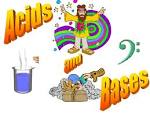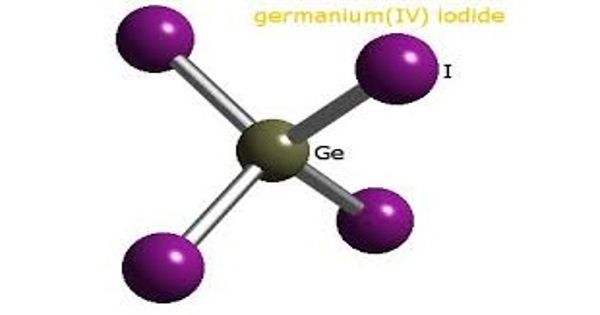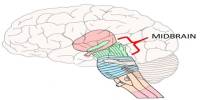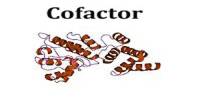For thousands of years people have known that vinegar, lemon juice and many other foods taste sour. However, it was only a few hundred years ago when it was discovered that these things taste sour – because they are all acids.
In the seventeenth century, the English writer and amateur chemist Robert Boyle first labeled substances as either acids or bases (he called bases alkalis) according to the following characteristics:
- Acids taste sour, are corrosive to metals, change litmus (a dye extracted from lichens) red, and become less acidic when mixed with bases.
- Bases feel slippery, change litmus blue, and become less basic when mixed with acids.
According to Brønsted-Lowry definition of acid is any substance that can donate a hydrogen ion, and the base is defined as any substance that can accept a hydrogen ion. In essence, a base is the opposite of an acid.
(Under the Brønsted definition, acids are often referred to as proton donors because an H+ ion – hydrogen minus its electron – is simply a proton)
For example, hydrochloric acid (HCl) dissolves in water and releases hydrogen ions as follows:
HCl H+(aq) + Cl–(aq)
Similarly H2SO4 (sulfuric acid), HNO3 (nitric acid), HBr are acids as they dissociate in water to give H+ ion.
Conversely the compounds like sodium hydroxide (NaOH) , baking soda or sodium bicarbonate (NaHCO3) are bases because they take off the H+ ions from solution. For example:
H Cl + Na OH Na Cl + H2O
H Cl + Na HCO3 Na Cl + H2 CO3
Properties of Acids
- taste sour (don’t taste them!)… the word ‘acid’ comes from the Latin acere, which means ‘sour’
- acids change litmus (a blue vegetable dye) from blue to red
- their aqueous (water) solutions conduct electric current (are electrolytes)
- react with bases to form salts and water
- evolve hydrogen gas (H2) upon reaction with an active metal (such as alkali metals, alkaline earth metals, zinc, aluminum)
Properties of Bases
- taste bitter (don’t taste them!)
- feel slippery or soapy (don’t arbitrarily touch them!)
- bases don’t change the color of litmus; they can turn red (acidified) litmus back to blue
- their aqueous (water) solutions conduct and electric current (are electrolytes)
- react with acids to form salts and water
Examples of Common Acids
- citric acid (from certain fruits and veggies, notably citrus fruits)
- ascorbic acid (vitamin C, as from certain fruits)
- vinegar (5% acetic acid)
- carbonic acid (for carbonation of soft drinks)
- lactic acid (in buttermilk)
Examples of Common Bases
- detergents
- soap
- lye (NaOH)
- household ammonia (aqueous)
Strong Acids
| Strong Bases | The Formulae |
| Sulphuric acidHydrochloric acid Nitric acid Perchloric acid | H2SO4HCl HNO3 HClO4 |
A strong acid is an acid which is fully (almost 100%) ionised in solution.
Weak Acids
A weak acid is an acid which is only partially (nearly 1%) ionised in solution. Examples are- CH3COOH, HCOOH, etc.
Strong Bases
A strong base is one which is fully ionised in solution.
| Strong Bases | The Formulae |
| Lithium hydroxide |
Sodium hydroxide
Potassium hydroxide
Barium hydroxide
Calcium hydroxideLiOH
NaOH
KOH
Ba(OH)2
Ca(OH)2
Weak Bases
A weak base is a base which is only partially ionised in solution. Examples are- NH4OH, Mg(OH)2, Al(OH)3, etc.
pH scale of acidity
| [H+] | pH | Example | |
| Acids | 1 X 100 | 0 | HCl |
| 1 x 10-1 | 1 | Stomach acid | |
| 1 x 10-2 | 2 | Lemon juice | |
| 1 x 10-3 | 3 | Vinegar | |
| 1 x 10-4 | 4 | Soda | |
| 1 x 10-5 | 5 | Rainwater | |
| 1 x 10-6 | 6 | Milk | |
| Neutral | 1 x 10-7 | 7 | Pure water |
| Bases | 1 x 10-8 | 8 | Egg whites |
| 1 x 10-9 | 9 | Baking Soda | |
| 1 x 10-10 | 10 | Tums® antacid | |
| 1 x 10-11 | 11 | Ammonia | |
| 1 x 10-12 | 12 | Mineral Lime – Ca(OH)2 | |
| 1 x 10-13 | 13 | Drano® | |
| 1 x 10-14 | 14 | NaOH |
The Acids increases the concentration of H+ ion where as a base decreases concentration of H+ ion in a solution. The acidity or basicity of something therefore can be measured by its hydrogen ion concentration.
The pH scale of acidity is described by the formula:
pH = -log [H+]
Here [H+] = hydrogen ion concentration measured in moles of H+ per liter of solution.
For example, a solution with [H+] = 1 x 10-7 moles/liter has a pH equal to 7 (a simpler way to think about pH is that it equals the exponent on the H+ concentration, ignoring the minus sign)
The pH scale ranges from 0 to 14. Substances with a pH between 0 and less than 7 are acids (pH and [H+] are inversely related – lower pH means higher [H+] and a stronger acid). Substances with a pH greater than 7 and up to 14 are bases (the higher the pH, the stronger the base). Right in the middle, at pH = 7, are neutral substances, for example, pure water.
The relationship between [H+] and pH is shown in the table below alongside some common examples of acids and bases in everyday life.
Neutralization
Neutralization is reaction between acid and base in which the end products are water molecule and salt.
H Cl + Na OH Na Cl + H2O
H2 SO4 + Ca (OH)2 Ca SO4 + H2O
Salt
A salt consists of an aggregate of metallic ions and acidic ions. A salt is derived from an acid to which it corresponds by replacing the H+ ion of the acid by an equivalent number of metal ions.
Acid Salt
H+ Cl– Na+ Cl–
(H–)2 SO42- Cu2+ SO42-
Acid salt
If the negative ion of the salt is further capable of further ionization to yield H+ ion then the salt is called acid salt. But if not than it is a normal salt
| Acid salt | Normal salt |
| Sodium hydrogen sulfate | Sodium sulfate |
| Sodium hydrogen carbonate | Sodium carbonate |
















